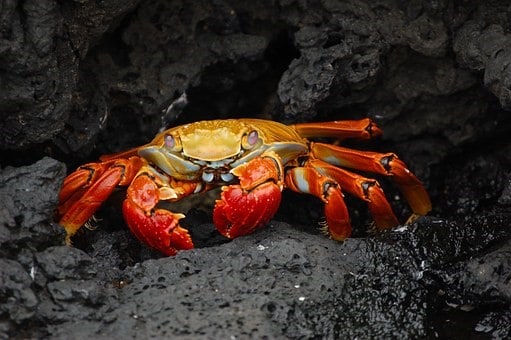Ghee is a cultural mainstay in India and the Middle East, being used for a ton of recipes, herbal treatments, and even the occasional religious ritual. It’s got a lot in common with clarified butter and tastes amazing. If you pull out all the stops, just how long can you make ghee last?
You can make ghee last for up to a year, which is over four times the storage life of normal butter! That’s assuming you handle it in ideal conditions: glass containers and cool, dry cabinets far removed from sunlight and moisture. If you end up using ghee a lot, it might be a good call to get another container to prevent the constant reopening of your main stock.
Despite superficial similarities to butter, the storage life difference is remarkable. There are a lot of factors that go into that, and recognizing their differences will shed light as to why that is.
What is Ghee?
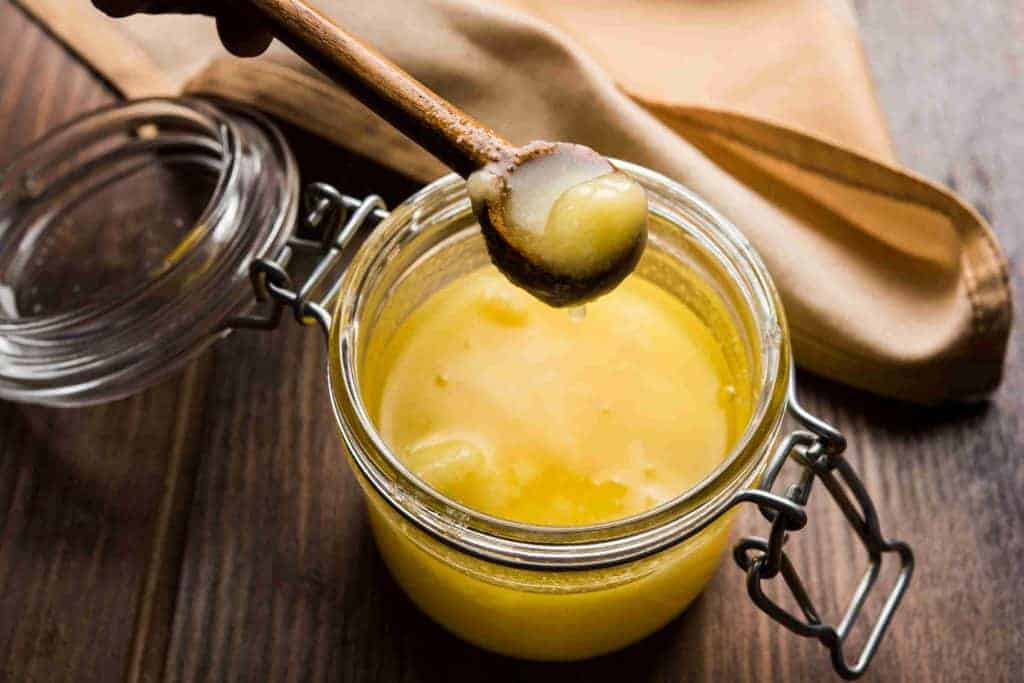
Ghee is a type of clarified butter with little to no milk solids. Butter is simmered and skimmed to remove traces of water and lactose, which are the main contributor to butter’s rapid expiration. This was a common practice in India and the Middle East, owing to their hot weather ravaging unrefrigerated goods – especially for dairy-based products.
Not only does the process greatly stretch the shelf life, but it also removes the need for refrigeration entirely. You can comfortably store ghee in ice boxes, root cellars, and other unpowered off-grid cooling options available.
That doesn’t make it a bad idea to keep them in your fridge. The quality of your ghee may decline if you can’t maintain good storage conditions. This is more of a concern after opening, as sealed ghee is very hardy.
Ghee can last up to a year without refrigeration. Some instances go well into the eighteen-month mark with no significant quality drops. Making your own ghee isn’t a bad option, as all you’ll need to do is separate the milk solids from the fat.
It also has the added boon of making it fit for consumption for lactose-intolerant people. The liquids will evaporate on their own over time. It’s a simple matter of straining your final product carefully.
If you plan on polishing off your entire stock of ghee, make sure to finish all of it within three months or less. It won’t go bad past this point but will have its flavor and nutritional value altered gradually. Note that different brands of ghee have their own guidelines, so defer to the label first and foremost when deciding how you want to handle your ghee.
Extending Shelf Life of Ghee
1. Tuck It Away in Cool, Dry Cabinets
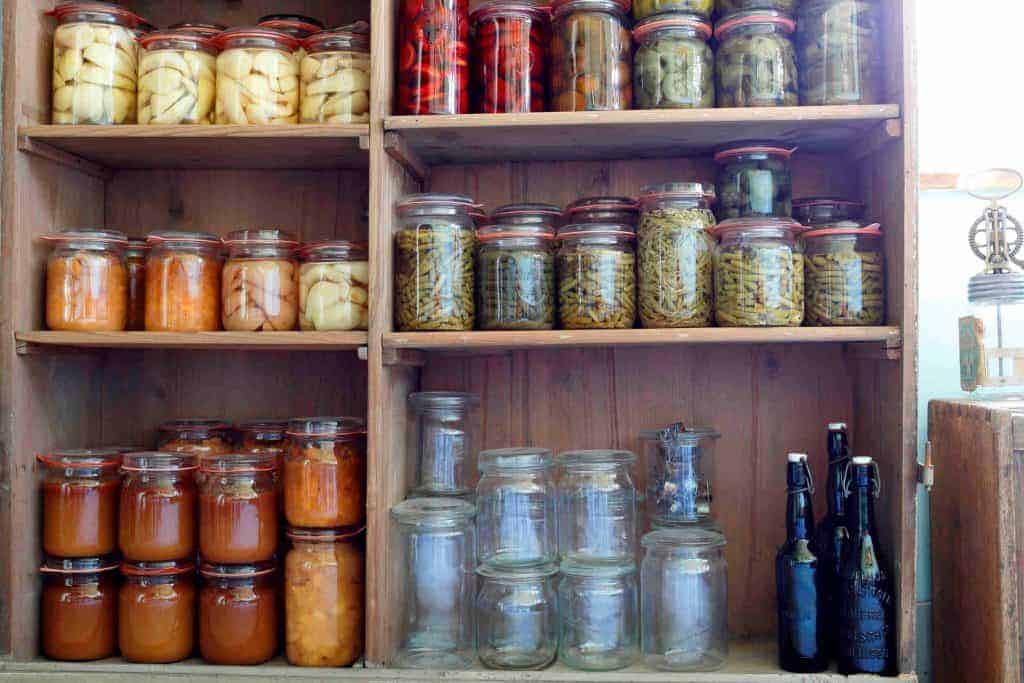
The reason ghee lasts so long is in part due to lack of moisture. Keeping that balance is pivotal for easier storage. Treat it as you would your spice rack.
Humidity is a crucial element to consider, especially when one finds themselves opening the container frequently. Even brief uses draw in moisture from ambient air, which will eventually lead to your ghee losing quality. This concern compounds due to its long storage life, and a few months of constant use makes for a marked difference down the line.
Thankfully, ghee is free of most conditions bacteria need to thrive. The lack of moisture and milk solids make it less susceptible to contamination. Most require some type of watery medium to thrive and cannot do so entirely in highly concentrated fat or oil.
2. Stick to Airtight Containers
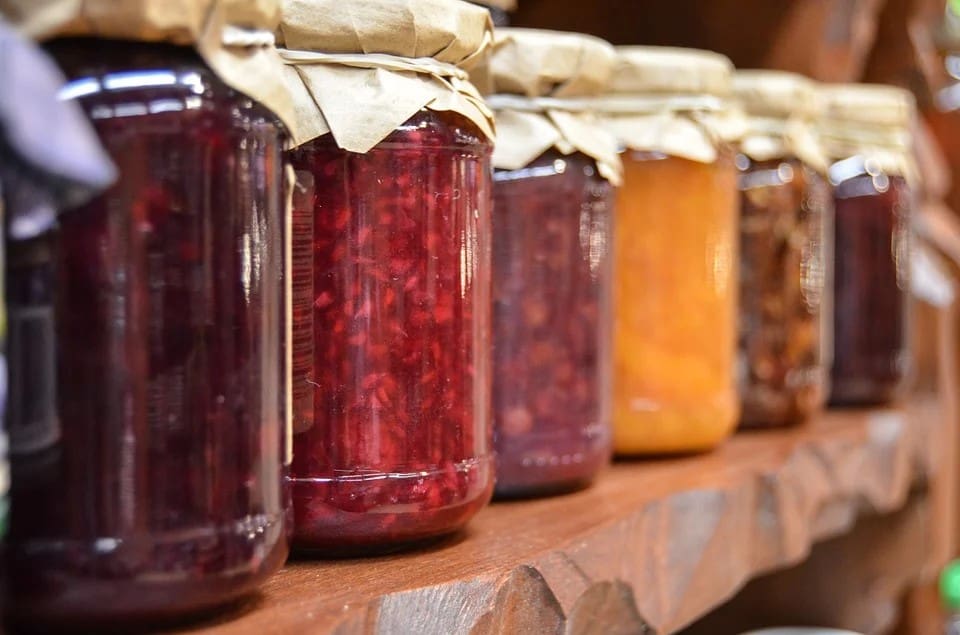
The most common airtight containers are made from either metal, plastic, or glass. Each offers their own sets of pros and cons, but we’d advise you stick to glass for reasons we’ll cover below.
Plastic
Plastic is a fine enough material for these purposes. Most plastic storage options are airtight, drop safe, and easy to find. You’ll want to stick to firmer containers – scooping ghee out of a Ziploc is a tedious affair.
Be mindful of certain drawbacks. While all materials here are airtight, some are more airtight than others. Plastic is a porous material, which means it might leak aroma rather than its contents. It will mildly detract from your ghee’s quality but fortunately won’t render it stale or unusable.
A bigger concern is BPA (bisphenol A), an industrial component in plastic products from the 50s onwards. BPA has been known to leech into food products to detrimental effect, being found linked to immunological and reproductive concerns. It’s currently being phased out, but the transition is still ongoing. If you plan on sticking with plastic containers, make sure you only use newer ones.
Metal
Metal isn’t very recommended, especially for ingredients. It’s airtight and non-porous but comes at the cost of rust risk and high thermal conductivity. Humid conditions might induce changes in your container that can easily taint the product within.
Even without that risk, metal conducts heat too well for safe food storage. Constant melting and cooling will wreak havoc on your ghee’s nutritional value. Eventually, this reaches a point where your clarified butter is rendered entirely inedible.
There are metal containers that don’t possess those risks but come at costly prices. It’s really not worth splurging on considering other, more accessible materials can do the same job just fine.
Glass
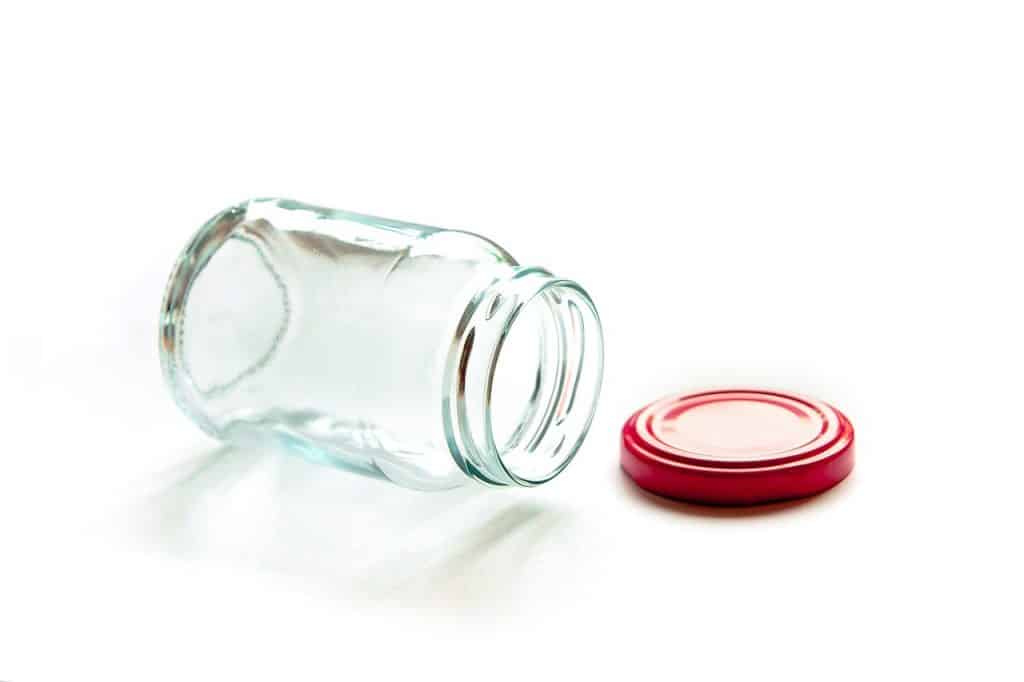
Glass is a nice compromise, being the ideal material for storing most perishable ingredients. It’s non-porous, affordable, and a poor thermal conductor to boot.
It also helps that glass is transparent, so checking for discolored ghee can be done at a glance. The transparency also works against it, as light can damage its contents without an opaque covering.
Another notable drawback is that it isn’t drop safe. Just be careful when handling it, and the fragility won’t feel like a relevant factor. Glass simply offers the best longevity among the materials available, and is never a bad choice to use for storing ghee.
3. Use Multiple Containers
Depending on your household, ghee could be used as often as thrice a day. Opening and closing the same container will gradually allow ambient moisture to build up. You’ll be tasting the difference after a few months.
Constant usage won’t be a problem for three months’ worth of ghee even without refrigeration. It might be wise to use multiple containers to avoid inducing too much moisture for reserves that run deeper than that.
If buying or making in bulk, only unseal a single jar for usage. Use different containers to remove the need to constantly expose them. Small plastic containers are great for this purpose and should be stored in the fridge between uses.
An ideal setup would be your main ghee stock stored in glass within a cool, covered cabinet. Use it to refill the smaller container you plan on refrigerating. Two weeks’ worth of supply should be more than enough for daily kitchen needs and protects your main supply from too much agitation.
4. Keep It Covered and Away from Sunlight
Ghee doesn’t do well in sunlight. The warmth will speed up its decay rate, cutting into its effective shelf life. It’ll could still last for quite a while, but may develop discoloration and consistency issues over time.
It’s also worth noting that ghee is significantly less photosensitive than comparable products like butter or cream. The reason those two products suffer is due to the presence of lactose, which doesn’t play well with sunlight.
Ghee still ends up hampered by exposure, so you should steer clear to avoid potential oxidation damage. A common sign of oxidation damage is discoloration. The top layer will start to whiten. All you need to do is scrape the troubled layer off and it should still be good enough to eat.
5. Spice It Up
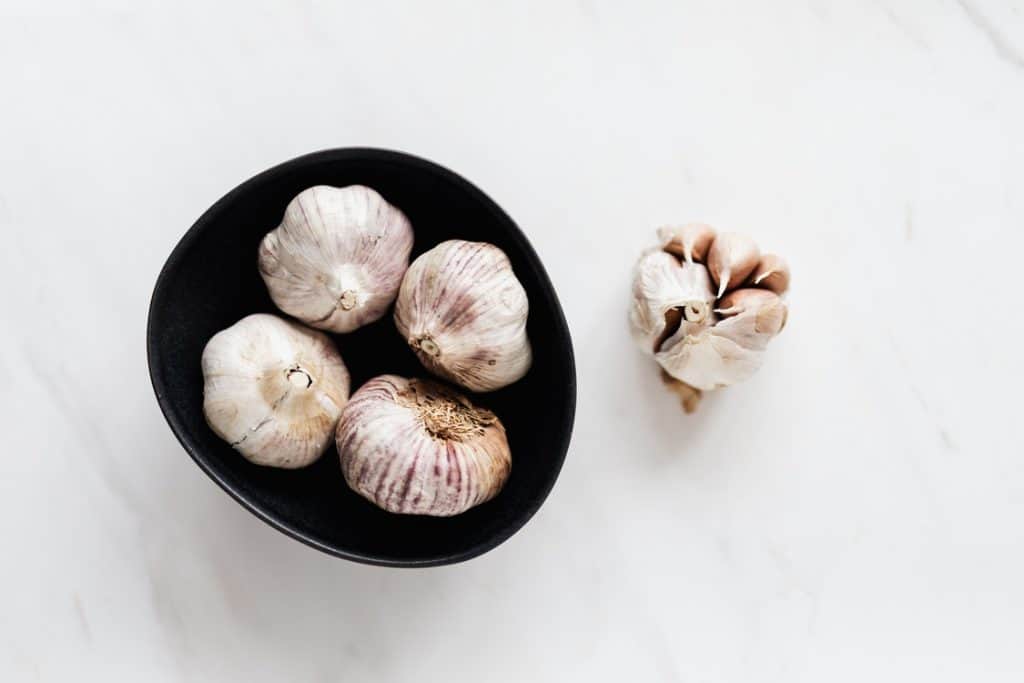
Infused ghee is aromatic, delicious, and enduring. It can be made at home very easily and is a worthwhile endeavor to make ghee last. Common spices to introduce are garlic and saffron.
Garlic has anti-viral properties, anti-bacterial, and antiseptic properties. It also makes for an amazing organic insecticide. Infusing your ghee with bacteria will help it last longer and smell much more fragrant. Insects and bacteria will be effectively warded off by the introduction of garlic into the mix. It makes for a no-brainer addition to stretch out ghee shelf life.
While saffron isn’t as much of a wonder spice as the previous example, it boasts antimicrobial properties that stop unwanted microorganism growth in their tracks. Ghee already does an excellent job being inhospitable to bacteria and protozoa, and the introduction of saffron just helps it serve that function better.
Identifying Ruined Ghee
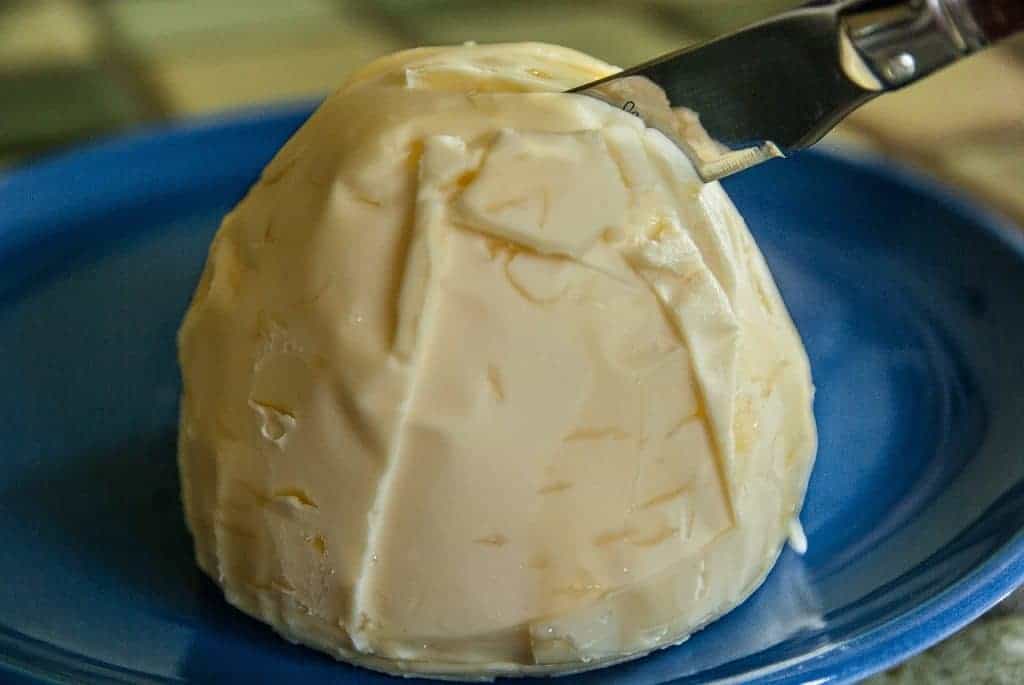
When spotting ruined ghee, the main traits to focus on are color, taste, and smell.
Color
Good ghee has a deep, flourishing egg yolk yellow shade to it. The entire thing should be one homogenous color, with any gradation present being bad signs. If you notice mold on the surface, you should discard it immediately.
Clear liquids building up mean your container wasn’t sealed properly, and the top layer will look pale relative to the rest of it. Mild cases result in a whitened top layer that can be skimmed easily, but anything more than that is better disposed of.
Taste
Ghee should taste like a better version of butter. It boasts a rich texture, subtle sweetness, and just a hint of nuttiness courtesy of the simmering process. Anything that detracts from that is an immediate red flag.
The first thing to go is the nutty flavor, followed by the sweetness and richness growing more subdued. This ends up noticeable in six months – possibly sooner if the container is opened frequently. Eventually, your ghee will sour. It can’t be salvaged past that point.
Smell
There should be a decadence to the aroma, along with small hints of milk and caramelized sugar. Good ghee will smell amazing, and this usually ends up the most obvious sign after popping open the jar. Ghee is mostly fat or oil, and few things are more nauseating than rancid oil.
Final Thoughts
For a butter-based derivative, ghee lasts for a surprisingly long time – a whole year! That doesn’t mean you should be careless about storing it. Ghee is richer, sweeter, and healthier than normal butter. It’s even good for lactose-intolerant people as all the milk solids have been boiled out and skimmed off. Think of it as an investment, given all its advantages, and take steps to make it last.

